#Who is 1977's redhead girl?
Text
Happy Birthday 🎂 🥳 🎉 🎈 🎁 🎊 To The Most Ravishing & Radiant British Redheaded Actress Of All Times.
She has starred in Countless Films 🎥 & A Iconic Television Series & Tv Movies Over Several Decades In Her Acting Career
Hailing all the way Uxbridge, Middlesex Of England 🇬🇧
She was born to Mieke van Tricht (1914–2007),
a nurse, and Benjamin John Frankenberg FRCOG (1914–1990), a distinguished gynaecologist and obstetrician. Her father was Jewish; he was born in England, to a family from Nowe Trzepowo, a village in Poland. Her mother was a Dutch Protestant (with family from Deventer) who was a prisoner of war during World War II and had lived in the Dutch East Indies (now Indonesia). Seymour has stated she learned Dutch from her mother and her fellow survivors from the Japanese internment camp, who frequently spent holidays together in the Netherlands when she was a child. Encouraged by her parents (who sent her to live with family friends in Geneva to practise her languages), she learned to speak fluent French.
In 1969, Seymour appeared uncredited in her first film, Richard Attenborough's Oh! What a Lovely War. In 1970, Seymour appeared in her first major film role in the war drama The Only Way. She played Lillian Stein, a Jewish woman seeking shelter from Nazi persecution. In 1973, she gained her first major television role as Emma Callon in the successful 1970s series The Onedin Line. During this time, she appeared as female lead Prima in the two part television miniseries Frankenstein: The True Story. She appeared as Winston Churchill's girlfriend Pamela Plowden in Young Winston, produced by her father-in-law Richard Attenborough.
In 1973, Seymour achieved international fame in her role as Bond girl Solitaire in the James Bond film Live and Let Die. IGN ranked her as 10th in a Top 10 Bond Babes list. In 1975, Seymour was cast as Princess Farah in Sinbad and the Eye of the Tiger, the third part of Ray Harryhausen's Sinbad trilogy. The film was not released until its stop motion animation sequences had been completed in 1977. In 1978, she appeared as Serina in the Battlestar Galactica film and in the first five episodes of the television series. Seymour returned to the big screen in the comedy Oh Heavenly Dog opposite Chevy Chase
In 1993, Seymour was cast as Dr. Michaela Quinn in the television series Dr. Quinn, Medicine Woman, a medical drama set in the Wild West which ran for 6 seasons and resulted in a further two Emmy nominations and four Golden Globe nominations, including one win. Seymour was given a star on the Hollywood Walk of Fame and, in 2000, was appointed an Officer Of The Order Of The British Empire
In addition to her acting career, Seymour is the founder of the Open Hearts Foundation as well as an author, having (co-)written several children's books and self-help books. Under the Jane Seymour Designs label, she has created jewellery, scarves, furniture, rugs, handbags, paintings and sculptures.
In the 2000's She returned back to Back Television in The WB'S/ CW'S Hit Superhero TV Series 📺 Based On DC COMICS Comicbook Character, Superman 🦸♂️
SMALLVILLE
& appeared in Other films & tv shows later on
From Wedding Crashers 💒
To Modern Men
From How I Met Your Mother
To Dancing With The Stars 🌟
She has posed for Playboy 3 times over the her long time Career & At Her Age There Is No Stopping Her Ageless Beauty from Being More Ravishing then ever before.
She is The Greatest English Actress Of Pur Times Among All Of The Greatest Since the Early 1900's & Beyond
Please wish this Radiant Treasure ✨ Of A British Actress A Very Elegant & Graceful Happy Birthday 🎂 🥳 🎉 🎈 🎁 🎊
You Know Her & You Just Gotta Love Her 💘
The 1 & The Only
MS. JANE SEYMOUR ♥ 👩🦰
HAPPY 72ND BIRTHDAY 🎂 💓 💗 💖 ❤ TO YOU MS. SEYMOUR

1 note
·
View note
Photo

I’ve decided to use Tumblr as a means to help my writing! Here is an excerpt from my personal favorite I’ve written so far. :)
The full story can be read here:
https://www.fanfiction.net/s/12282860/1/His-Favorite-Christmas-Story
Please let me know what you think. 😅
His Favorite Christmas Story
“Uncle Moony, will you tell us the story?” The small bespectacled boy with messy black hair looked up at Remus with a questioning stare. The small group of children behind him nodded in agreement. It had become a tradition, that at the Order of the Phoenix’s annual Christmas party Remus would tell the kids their favorite Christmas story.
“Sure, little pup. Ok, kids gather around. This is the story about the girl with no name.” Remus smiled at the children, their faces showing how eager they were to listen to him. “I met her in Hogsmeade in 1977. She was a vision, her hair was a mess of unkempt curls, she had eyes the color of whiskey and lips that were the brightest shade of red I had ever seen. For me, it was love at first sight…”
Throughout the years the faces of who listened changed. As the kids grew older and the second Wizarding war raged on, new faces were added to the audience, and some familiar faces had heard the story for the last time. But Remus always told the story exactly the same way, and whoever was there to hear it was always captivated by the story of Remus’ long lost love.
————————
“Hermione, you are the woman of my dreams. The light of my life, the only one for me,” The redhead gave her a cheeky smile.
“Fred, what do you need? I am trying to get ready for the Christmas party. It’s starting in 2 hours, and you know how important this one is, being the first Christmas since Voldemort was defeated and all,” Hermione sighed, setting the poinsettia down on the dining room table of Number 12 Grimmauld Place.
“Oh, I don’t need a thing Dove. I just wanted to offer you a Christmas treat.” Fred held a small green plate out to Hermione, the only thing on it was a small piece of chocolate, engraved with two interlocked hearts.
“Fred, I may not have finished my education but surely you do not believe me dense enough to eat anything you, famed prankster, were to offer me,” she replied back haughtily.
“Oh my Dove, you wound me. I would never do anything to put my future bride into any kind of danger. I am merely offering you a token of my love and devotion,” he smiled back at her innocently.
“When you put it that way Fred, then I must decline solely based on the fact that I am not your future bride, nor am I your ‘Dove’ as you keep calling me, now please stop bothering me, so that I can go get ready.” With that, Hermione pushed past him and walked up the stairs toward her bedroom.
Once safely inside her bedroom, Hermione pulled the red cocktail dress out that she had been saving specifically for tonight. She held it to herself and looked in the floor length mirror, a bright smile coming to her face, before she spun around in a circle and draped herself across her bed. That was when she noticed a box of chocolates with a note written in Harry’s messy scrawl.
Hermione,
Happy Early Christmas! Enjoy!
Love Harry
She opened the box to see an arrangement of chocolates that looked much like the one Fred had offered her earlier. Harry wouldn’t give me anything that wasn’t safe. I think I will have one of these once I am ready. She smiled to herself, before getting back up to start on her hair and makeup.
An hour later Hermione was pleased as she looked at herself in the mirror. . Her hair fell onto her shoulders in wild curls, her eyes were done in a very light makeup, but her lips were bright red, to match her dress. Hermione smiled as she once again twirled around, admiring the way the skirt of the dress swirled around her legs. She was just about to leave her bedroom and check on last minute decorations, when the box of chocolates caught her eye once again. I’ll have just one. She had no sooner swallowed the treat, when she felt the world begin to spin, and everything went black.
11 notes
·
View notes
Text
#Barbara #Rhoades #Biography #Photos #Wallpapers #awesome #happy #hiphop #lol #makeupartistsworldwide #makeupblogger #makeupideas #photography #runwaymodel #worldstarhiphop
Barbara Rhoades is an American actress, identified primarily for her comedy and mystery roles, specially as lady bandit Penelope “Bad Penny” Cushings in The Shakiest Gun in the West (1968). She experienced a memorable role as Jodie Dallas’s future wife, Maggie Chandler, in the TV series Soap.
She has had guest roles on diverse television series including It Takes a Thief, Ironside, Mannix, Columbo, Kojak, Alias Smith and Jones, Love, American Style, The Odd Couple, The Six Million Dollar Man, Maude, Trapper John, M.D., and Murder, She Wrote. In 1989, she was cast as Jessica Gardner on the NBC soap opera Generations. On television into the 2000s, she appeared on a 2003 episode of Law & Order. She way too had a recurring role as the private detective Maggie Chandler on Soap.
A tall, voluptuous redhead, Rhoades appeared in a handful of 1970s films. They contain There Was a Crooked Man… (1970), opposite Kirk Douglas and Henry Fonda, and Up the Sandbox (1972) starring Barbra Streisand. She played a law enforcement officer, “No Balls” Hadley, in 1977’s The Choirboys and a Vegas hooker who picks up Art Carney along the road during his Oscar-winning performance in Harry and Tonto (1974). She also had a role in Neil Simon’s The Goodbye Girl (1977) and 1973’s “Scream Blacula, Scream”. In 2007, she appeared in the movie First Born with Elisabeth Shue.
Name Barbara Rhoades Height Naionality American Day of Birth 23-March-1947 Place of Birth Poughkeepsie, New York, U.S. Famous for Acting
The post Barbara Rhoades Biography Photos Wallpapers appeared first on Beautiful Women.
source http://topbeautifulwomen.com/barbara-rhoades-biography-photos-wallpapers/
0 notes
Text
Bobby “O”, Hi-NRG and the expression of queer desire
A few months ago, someone at a party asked me what song I would choose to have played at my funeral. I answered without hesitation: ‘Passion’, by The Flirts. This response was met with wide eyes of incredulity by the heterosexual man who had posed the question, and debate spilled out around us about why I should (or should not) choose something with more meaning, more depth, more substance. But I believe meaning can be found in the shallowest of places.
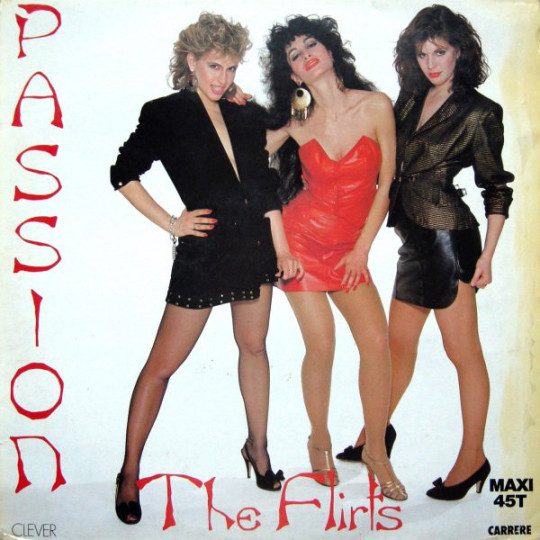
Hi-NRG is generally considered to be a shallow place. Peaking between 1982 and 1989, Hi-NRG rose like a phoenix from the embers of disco – an inferno which, by the late-1970s, was not so much petering out as being stomped out by a critical backlash epitomised by events like 1979’s Disco Demolition Night. The origin of Hi-NRG is fabled to be in Donna Summer’s ‘I Feel Love’ (1977), with its rolling arpeggiators and what Summer described in interviews as its ‘high energy vibe’.[1] Like disco before it, Hi-NRG uses predominantly electronic sounds, and was produced and consumed largely by marginalised communities, including queer African-Americans, Italian-Americans and Latinos. It was music for nighttime and nite-clubs, for dancing to, escaping to, for fostering inclusivity.
“You could think of early disco as the music of outsiders”, says curator, DJ and Hi-NRG enthusiast Pádraic E. Moore, who points out that Hi-NRG also furthered disco’s vital contribution to “the formation of gay identities, promotion of queer culture and disruption of gender norms”.[2] Moore cites Hi-NRG tracks like Patrick Cowley’s ‘Menergie’ (1981) and Modern Rocketry’s ‘Homosexuality’ (1985) as daring and provocative expressions of queer desire. Cowley and his ‘Menergie’ collaborator Sylvester were both early pioneers of the Hi-NRG genre, associated with San Francisco’s Megatone Records, and both of them would be killed by AIDs by the end of the decade. (Indeed, records like ‘Homosexuality’ seem even more radical and defiant given the backdrop of the AIDs crisis, and the accompanying discriminatory culture of the US mainstream.)
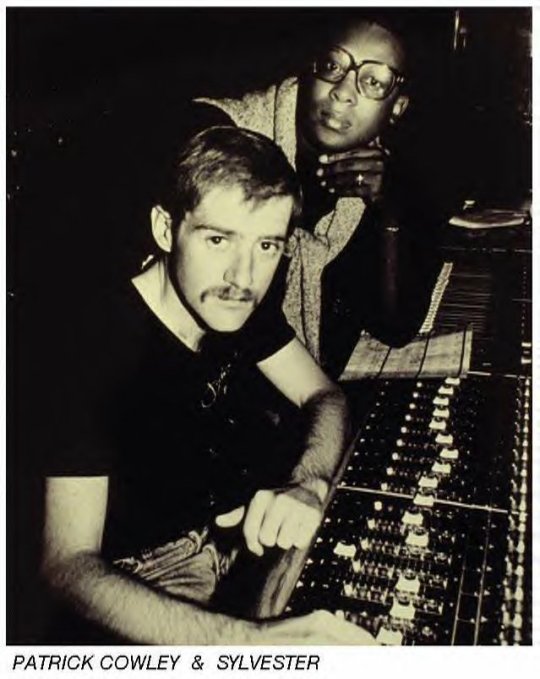
Moore stresses the DIY aesthetic of Hi-NRG in this initial, more underground phase, made possible by the increased availability and affordability of electronic music equipment, including Roland’s 808 drum machine and later, Yamaha’s DX7 synthesiser. By the middle of the 1980s, the genre would find mainstream success, with Stock Aitken Waterman producing a number of Hi-NRG hits by Divine, Dead or Alive, Hazell Dean and Bananarama; Moore also points out the Hi-NRG influence on queer artists such as Bronski Beat (in particular their 1984 track ‘Why?’) and Frankie Goes To Hollywood (‘Relax’). Though some great Hi-NRG tracks came from this period, the mainstream’s co-option of the genre would eventually lead to Hi-NRG’s dilution and demise – what Moore derides as the “vanilla cul-de-sac”[3] most radical art forms ultimately end up in. At its peak, though, Hi-NRG was a radical expression of queer desire, fuelled by the burgeoning LGBT club culture in the UK and the US.
This queer history of Hi-NRG is not without contention, though, and this essay will focus on the work of Bobby Orlando, a pioneer of the genre who I’m drawn towards not only because I love his music, but also because he is a problematic figure who in many ways troubles this reading of Hi-NRG. Orlando has been accused of plagiarism, homophobia, sexism and exploitation, and was characterised by a 1987 profile in The Face Magazine as “the self-styled master of classic techno trash” who aspired to be “the Ronald McDonald of the music industry”.[4] But Babette loves a problem child and in this essay I will argue why Orlando’s music is nonetheless worthy of our attention, and can still be celebrated within a queer history of late 20th-century dance music.
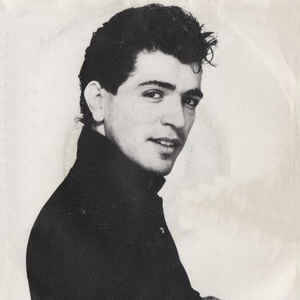
Bobby Orlando grew up in New York State, a teenage boxing sensation who could allegedly do one-finger push-ups. Not wanting to ruin his pretty face, he quit fighting sports and took up music instead, initially dipping his toe into the ‘glitter rock’ scene, attracted by its flamboyant masculinity and its taste for excess. In 1977, the year Giorgio Moroder released Donna Summer’s ‘I Feel Love’, Orlando ditched the guitar and swapped glam rock for disco. He set up his own label, “O” Records, in 1980 – in the midst of the disco backlash. Contemporaneously to the aforementioned Cowley, Orlando carved out his own niche of fast-paced, synth-laden, campy staccato disco that would become known as Hi-NRG.
An almost exclusively electronic genre, Hi-NRG is defined by its synthetic sounds (Moore points out its eschewal more orchestral disco elements such as layered strings[5]) and Orlando’s music in particular makes use of gratuitous patches and samples. Compare his amped-up early version of the Pet Shop Boys’ ‘West End Girls’ (1984) to the more stripped back and definitive ‘hit’ version (1985) to see what I mean. Orlando’s penchant for artifice extends beyond the sounds he made, however, and into the broader aesthetic and practice of his music-making. The Flirts, arguably Orlando’s biggest musical legacy, were girl group of sheer artifice. Session musicians recorded the vocals, then a rotating roster of models, dancers and actresses lip-synced the song live: one blonde, one redhead, one brunette. Different tours and albums had different line-ups, with Orlando himself the only consistent factor.

One blonde, one redhead, one brunette: The Flirts performing live in 1983
Capitalising on this line-up of leggy, preened and pouting models, Orlando opted for a ‘sex sells’ approach to The Flirts’ song-writing. ‘Passion’, their biggest hit, opens with the zingy line “I’m waiting for you baby, it’s time for show and tell”, before going on to literally spell out sexual desire in a refrain of “P–A–SS–ION!”. In another track, ‘Calling All Boys’, The Flirts send out a signal of sexual invitation not to one specific boy/man, but to ALL boys/men. With its interchangeable frontwomen, hypersexualised performance of femininity and non-specific objects of desire, The Flirts are ostensibly meant to represent all or any women (or at least all or any white women since, gallingly by today’s standards, the group’s diversity is limited only to hair colour). With one or two exceptions, The Flirts’ performers are known only by one name – Hope, Holly, Sandy – and they serve only as vessels for Orlando’s expression.
This use of female bodies as two-dimensional, interchangeable marionettes is, of course, deeply exploitative, even if its symptomatic of the music industry’s attitude towards women as a whole. It should be noted that Orlando’s relations with many of his key performers, including Divine and Roni Griffiths, would turn sour after a couple of years’ collaboration. I don’t mean to underplay this problematic aspect of Orlando’s music-making, but to play devil’s advocate, I personally think his layering and obfuscation of authorship, and outright subversion of authenticity, is precisely what is fascinating about Orlando’s music.

Alongside the mirage of constructed femininity that was The Flirts, Orlando released and produced music under dozens of other names and self-invented bands, most of which had no members other than Orlando himself (except for the odd session vocalist). Wikipedia lists over 70 Orlando ‘acts’, and their camped-up, flamboyant names are a joy to read through: Barbie & The Kens, Hotline, the New York Models, Hippies With Haircuts, The He Man Band, The Fem-Spies, Girls Have Fun, Lilly & the Pink, The Bang Gang, Bubba and the Jack Attack …
The act of naming, and its transformative potential, was clearly not lost on Orlando. The adoption of constructed personas, fictitious identities and assumed names is a practise widely adopted within the queer community. It is a form of expression used not only by drag performers, but artists and activists (Rosa von Praunheim, Gluck, Claude Cahun, Tom of Finland, to name but a few). Orlando’s adoption of playful pseudonyms, many of which seem centred on gender/sexuality, seems to fit squarely within this practice, except for one rather large problem: Orlando identified as heterosexual and was reportedly homophobic. Rumour has it that after his music career fizzled out, Orlando became a religious zealot and wrote a book on creationism. I warned you he was problematic.
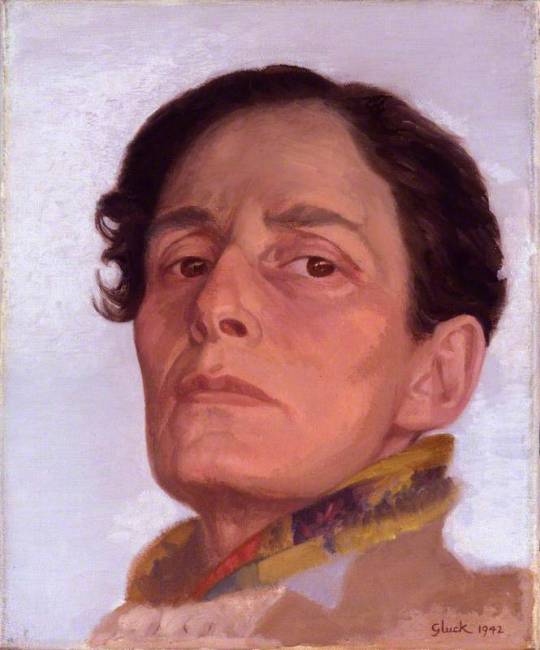
A 1942 self-portrait by Hannah Gluckstein, aka ‘Gluck’, recently included in Tate Britain’s exhibition of ‘Queer British Art 1861–1967′. The work is included in the collection of Britain’s National Portrait Gallery
Orlando’s music is throbbing with heterosexual desire and pumped-up machismo – “Let a man like me make a woman out of you”, promises one track, its cover art decorated with an illustration of a chiselled man lifting a barbell. In a rare interview with The Face Magazine in 1987, Orlando spoke of channelling the controlled aggression of his early boxing career into his music: “The only difference is that with records you take the aggression you would normally use beating the hell out of a guy by punching beats. It’s the same punch, the same drive.”[6]
One suspects that driving this male bravado and hetero-peacocking was an over-compensation of sorts, or even internalised homophobia. It’s not the place of this blog to speculate on Orlando’s sexuality, but whether or not the man himself was (is) queer, I think it’s fair to say that despite all the above, his music certainly was. Orlando’s performative take on masculinity is as artificial as The Flirts’ performance of femininity. Both expressions of gender identity chime with Susan Sontag’s definition of camp. In her still-relevant ‘Notes on Camp’ (1964), Sontag cites “the exaggerated he-man-ness” of bodybuilder Steve Reeves and Samson and Delilah actor Victor Mature as well as the “corny flamboyant femaleness” of Jayne Mansfield, Jane Russell.[7]
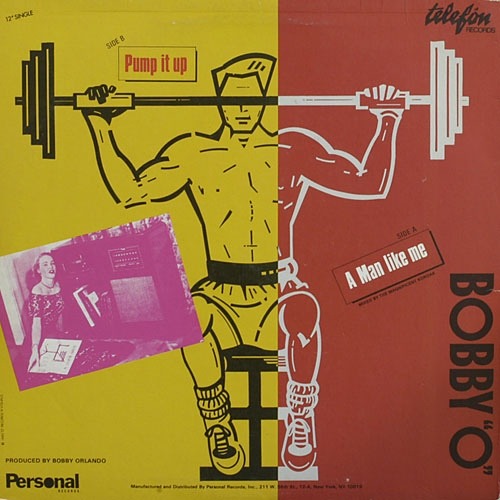
There is also a strong tradition of ostensibly ‘heterosexual’ anthems performed by women for a largely gay audience: Miguel Brown’s Hi-NRG hit ‘So Many Men, So Little Time’; Sinitta’s ‘So Macho’; Eartha Kitt’s ‘I Love Men’; The Weathergirls ‘It’s Raining Men’, etc. Seen in this context, tracks like The Flirts’ ‘Calling All Boys’ can take on a new meaning. And besides – that problematic Flirts paradigm of women as vessels becomes less straightforward when one views it through the kaleidoscope of queer identity: this is a song about this is desire for MEN, written by a MAN, performed by WOMEN miming WOMEN. Ironically, by adhering to uphold strict gender binaries, Orlando’s acts only serve to reveal how constructed and performative they are.

The exception, of course, is Divine – the only Orlando act to gender-bend in the more literal way. Unlike the majority of Orlando acts, Divine was not a persona of Orlando’s invention. An actor and drag queen, Divine had developed both a strong public identity and large fanbase by the time he began to collaborate with Orlando in 1981, having starred in several cult hits by filmmaker John Waters, including Pink Flamingos (1972) and Female Trouble (1974). As such, his sizeable impact on the history of queer identity in the late twentieth century extends beyond the scope of this essay and indeed deserves one in its own right. One point worth touching on, though, is that Divine’s expression of femininity – all grit, fighting talk and disobedient body – is, to me, a truer expression of womanhood (or at least my experience of it) than any of Orlando’s nameless models provide. Once more, there is realness to be found in artifice.

The expression of desire in Orlando’s records, whether read as queer or hetero, is as performative and artificial as the gender identities he constructs. In the Bobby “O” track ‘I’m So Hot For You’ (1982), Orlando croons, “I saw you at the party so I thought I’d play the game / Two strangers in a lonely room, I asked you your name”, before bursting into its infectious chorus of “I’m so hot for you and you’re so hot for me … what are we waiting for?”. (“Pass the poppers, please”, read the top YouTube comment when I listened to it). This is typical of Orlando tracks – eyes lock across a crowded party, a lonely lothario asks a girl her name and everyone’s fantasies come true. These plotlines are so cliché, though – so artificial and oversexed – that they almost stop being sexy. The scenario is too cinematic to be believable. The beats are too fast to bump ‘n’ grind to. This is music for taking pills and dancing euphorically to, not slow-jamming to before taking someone home. It’s burning passion with no fulfilment.
In his extensive survey of post-punk Rip It Up and Start Again, Simon Reynolds points out that the “non-funkiness” of Hi-NRG is one of the defining traits of the genre. It is “slamming rather than swinging”, he writes. Reynolds discusses Hi-NRG only as a footnote to Frankie Goes To Hollywood’s ‘Relax’, which though not ‘pure’ Hi-NRG itself, adopted many its its stylistic traits. He mentions Hi-NRG’s “orgiastic vibe”, but argues that ‘Relax’ was only sexy “in the exhibitionist sense of the Amsterdam leather bars [frontman] Holly [Johnson] visited, where the sex acts had an element of ‘theatre and performance’ … ‘Relax’ was driven by something far stronger than sensuality: an idea of sex as a weapon, shock tactic, threat”.[8]
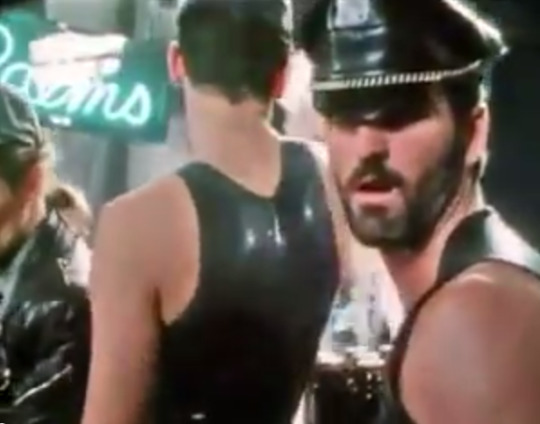
Screenshot from the banned version of Frankie Goes To Hollywood’s ‘Relax’, showing BDSM/leather bars. “You can really see how deviant this must have seemed in 1983″, says Moore[9]
The same could be said of Orlando’s sexploitation disco classics – the notion of sex as a dancefloor statement of intent, rather than a sensual act carried out behind closed doors. Orlando’s heroes and heroines know exactly what they want, as exemplified by 1982’s ‘She Has a Way’ (“She knows what she wants from you / You’ll do things you’d never do”). That’s not to say it’s always a happy ending, though. Much of the desire expressed in Orlando’s Hi-NRG pop songs is one-way – take Girly’s ‘Working Girl (One-Way Love Affair)’ or The Flirts’ ‘Helpless’ (“I can see you in the arms of another girl … you shattered my world”). These thwarted expectations of love are pure, swooping, teenage-style catastrophes of the heart. The sentimentality of such Orlando tracks, just like the directness of his more erotic numbers, give us permission to feel the most untempered emotions.
In 1978, the queer, socialist British journal Gay Left published an essay by Richard Dyer titled ‘In Defence of Disco’. In it, Dyer argues that there are three main characteristics of the disco genre: eroticism, romanticism and materialism. Dyer points out that almost all popular music is arguably erotic, but unlike the disembodied eroticism of pop music (admittedly more chaste in 1978 than it is today) and the ‘phallic’ grind of rock, disco’s eroticism is a full-bodied experience, making it open to all genders and sexualities. Then on the romanticism of disco, he argues that its “passion and intensity embody or create an experience that negates the dreariness of the mundane and everyday”. This flight from the banality of the everyday experience, and its accompanying structural sexism/racism, “can be seen as a flight from capitalism and patriarchy as lived experiences”.[10]
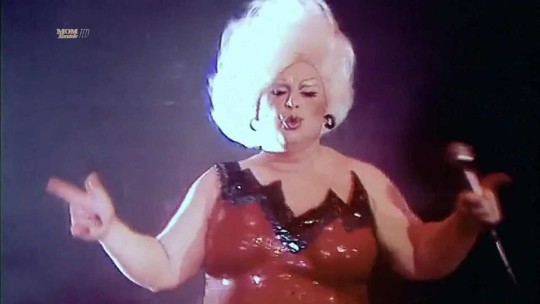
Though Dyer is, of course, discussing disco, I feel his points are equally relevant to its descendent Hi-NRG (“if not more so”, adds Moore, who brought my attention to the essay[11]). The full-bodied eroticism that Dyer describes is certainly a key component of Hi-NRG, alongside the euphoric escape from the conditions of late capitalism. Though both disco and Hi-NRG can be characterised by their excessive appetites (for drumbeats and cowbells, for flamboyant get-ups, for drugs, for sex), both offer a moment of respite from and alternative to the grind of day-to-day life, particularly for oppressed groups such as the queer community which, as pointed out at the beginning of this essay, made up large swathes of Hi-NRG’s audience.
Like most great pop/dance tracks, Orlando’s songs do not promise to deliver anything but a few minutes of punchy, sexy euphoria. But in my eyes, this is precisely what makes them so transcendental. To those of a certain bent, they deliver a pure hit of serotonin to the brain, and their artifice and ephemerality only serve to heighten this connection. I return, once again, to the wise words of Susan Sontag: “One cheats oneself, as a human being, if one has respect only for the style of high culture, whatever else one may do or feel on the sly.”[12]
Whether or not I’m permitted my wish of having a camp, sexy Hi-NRG track sang by three anonymous models played at my funeral, no hell or wild horses could stop me from enjoying it in the meantime.
FOOTNOTES
[1] Alan Jones & Jussi Kantonen, Saturday Night Fever: The Story of Disco (Chicago: A Cappella Books, 1999), cited on https://en.wikipedia.org/wiki/Hi-NRG, accessed July 2017
[2] Pádraic E. Moore, personal communication, July 2017
[3] ibid.
[4] Kimberley Leston, ‘The Story of O’, The Face, 1987, accessed online at http://www.italo-disco.net/HTML/HTML%20Interviews/Bobby%20Orlando%20Interview.html, July 2017
[5] Moore, ibid.
[6] Leston, ibid.
[7] Susan Sontag, ‘Notes on Camp’ in Against Interpretation and Other Essays (London: Penguin Classics, 2009), p. 279
[8] Simon Reynolds, Rip it up and Start Again, p. 504
[9] Moore, ibid.
[10] Richard Dyer, ‘In Defence of Disco’, Gay Left, Summer 1979, pp. 20–23, accessed via http://www.gayleft1970s.org/issues/gay.left_issue.08.pdf, July 2017
[11] Moore, ibid.
[12] Sontag, ibid.
youtube
youtube
youtube
#hi-nrg#bobby o#Pádraic E. Moore#Susan Sontag#Kimberley Leston#The Face#Simon Reynolds#Richard Dyer#Gay Left#In Defence of Disco#electronic music#cultural criticism#pop music#The Flirts#Divine#Bobby Orlando#O Records#queer#queer theory#Patrick Cowley#Sylvester#Megatone Records#Stock Aitken Waterman#LGBTQ#Donna Summer#Giorgio Moroder
0 notes